A lush, 'tropical' garden in Devon where bananas and ginger grow happily alongside the staples of an English country garden
Steep inclines and rocky outcrops are nothing to the owners of this coastal garden, which is filled with plants-many from the southern hemisphere-that thrive in such conditions, finds Caroline Donald.
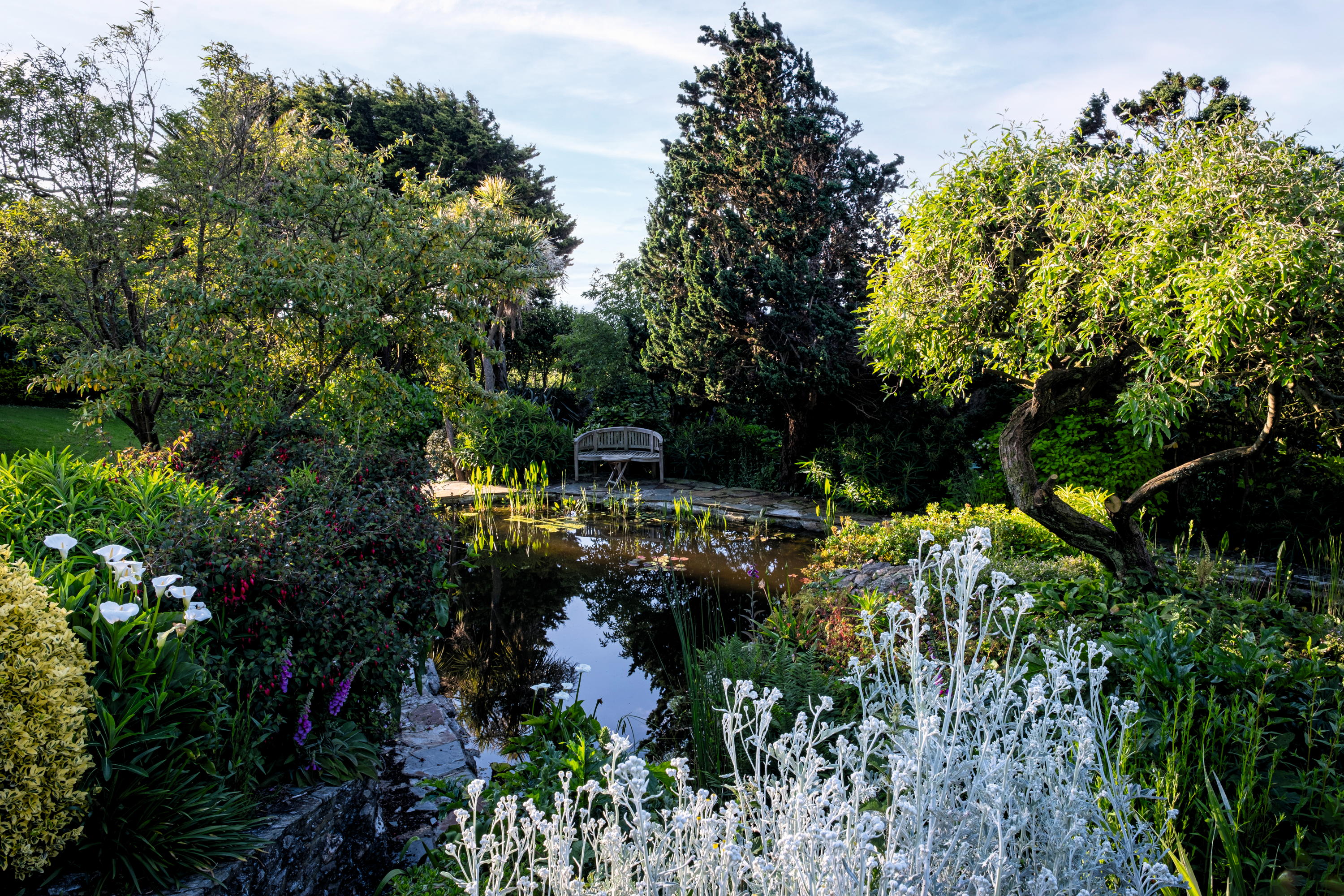
Were Chris Vanderspar to need a motto, ‘onwards and upwards’ would be most suitable. Having recently retired from 47 years of travelling the world as principal cellist at the Royal Opera House, he has fully turned his attention to further developing the 3½ acres of garden he shares with his wife, Cathryn, at Ash Park near East Prawle in the South Hams district of Devon. He shows no sign of saying ‘enough, we’re done’.
Situated three miles from the ferry to Salcombe, East Prawle is a pretty village on the brow of long slopes down to the English Channel. Just below the village, down a steep lane and tucked in under a steep escarpment that offers some protection from the winds, as does the shelterbelt of tough shrubs and trees, is the Vanderspars’ property. This includes their garden of surprises from around the world — from gingers, cannas, cordylines and bananas to monkey puzzles, cacti and camellias, as well as a grove of bamboos.
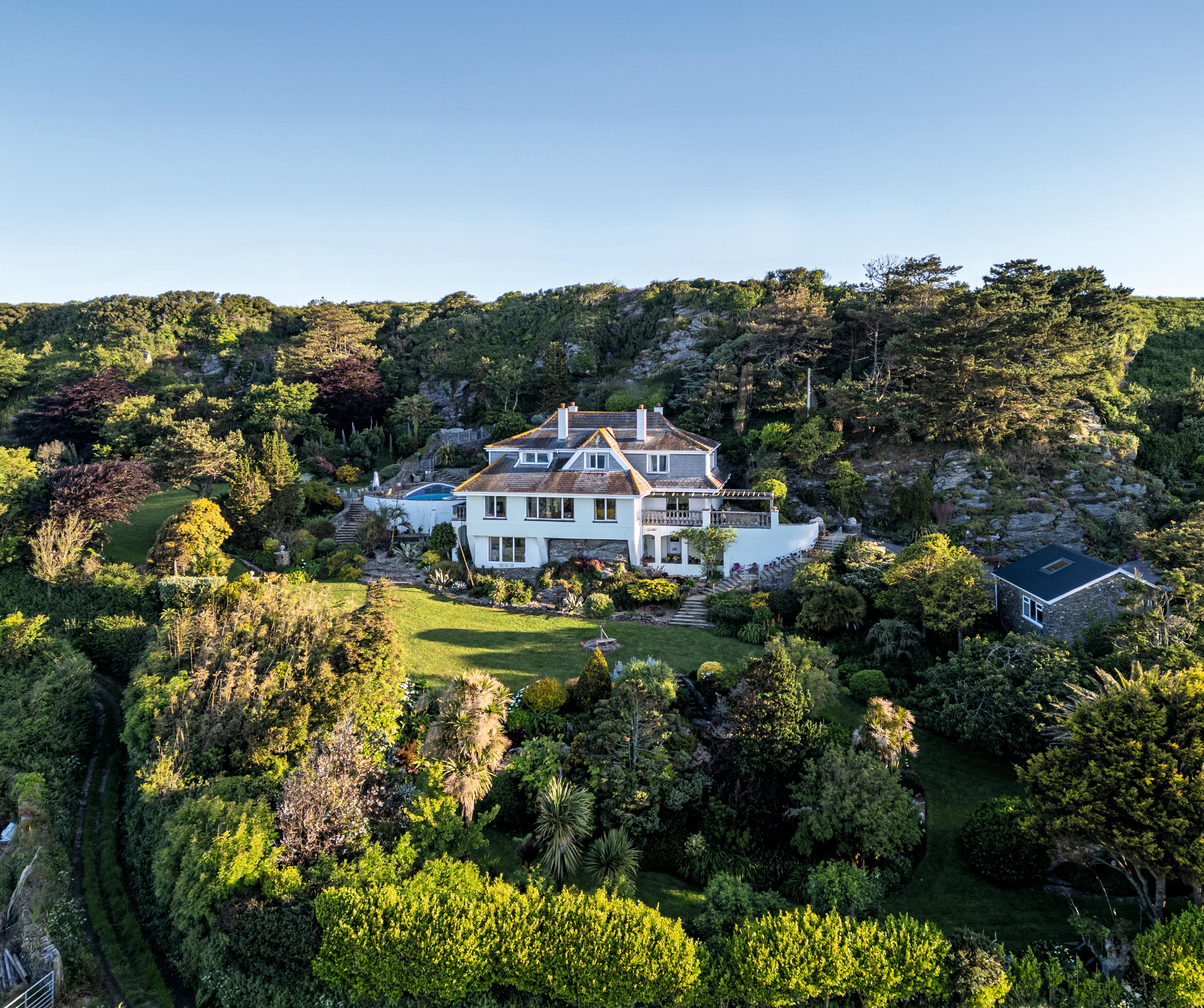
Ash Park sits up against an escarpment, surrounded by a garden containing exotics such as ginger, bananas, proteas and lampranthus from South Africa, as well as the Chilean fire tree Embothrium coccineum.
‘We have a lot of South African plants, such as proteas and lampranthus, and plants from other parts of the southern hemisphere, including the fantastic Chilean fire tree (Embothrium coccineum), with its scarlet flowers in the spring,’ says Mr Vanderspar.
It is, in places, a steeply sloping scene, which bothers Mr Vanderspar not a bit. In fact, he is still extending the garden up the rocky outcrop, creating vertiginous, narrow winding paths in order to reach new areas. Whether up here, where the views are 180 degrees wide over the fields spreading down to the sea, but the soil thinner and the land more exposed, or heading to a bench on the other side of the lawn in the lush dell beneath, one feels like a drunken sailor at times as one traverses the incline. Carrying a cup of coffee requires a steady hand and a spirit level.
Gimme shelter: Best plants for a windbreak
The lush, semi-tropical garden at Ash Park would not exist were it not for the shelter plants surrounding it, mitigating the impact of the strong, salt-laden winds. Windbreaks of the likes of the inherited pines and leylandii (which can grow leggy) are necessary, with other plants such as bamboo planted in front for further protection.
Fast-growing hedging, in particular griselinia and pittosporum, are resilient, as are silver-leafed Elaeagnus ebbingei and euonymus, which comes in different shades and varieties. Other successful hedging plants include laurel, oleaster and spotted laurel.
The couple bought Ash Park 11 years ago, first as a holiday house from their base in Norfolk, although, more recently, it has become their main home. It wasn’t an entirely random decision, as they had been to East Prawle as young sweethearts, camping in the field immediately above the house (not that they noticed it or the garden then). ‘That was more than 40 years ago and it hasn’t really changed. You can’t say that about many places,’ says Mr Vanderspar.
The original house, built hard against the rocky backdrop, was Edwardian and old photographs show it surrounded by stone walls in a neat rectangle. ‘We’ve got pictures from the 1930s of the families who lived here and, clearly, the garden was much enjoyed,’ says Mrs Vanderspar, who is a retired lawyer and non-executive company director. That house burnt down in the early 1980s and the then owners rebuilt it, retaining some of the Edwardian characteristics. They were keen gardeners and also bought land to either side of the original plot, bringing in Hillier Nurseries to provide a landscape design.
By the time the Vanderspars arrived, however, the house was being used for holiday lets and large parts of the garden had become neglected, despite the attentions of Mark Cater, who has been the gardener here since the new house was built. ‘He is marvellous; he has such knowledge of what will do here,’ says Mr Vanderspar. As Mr Cater was only employed for one day a week, it took all his time to maintain merely the lawns and flowerbeds immediately around the house.
Exquisite houses, the beauty of Nature, and how to get the most from your life, straight to your inbox.
He does, however, have a knowledge of what had gone before and, now that he works two to three days a week for his appreciative employers, the garden has revealed itself. ‘All sorts of things had been covered in brambles,’ says Mrs Vanderspar, who considers herself the under-gardener of the trio. ‘It was like the Secret Garden. Digging out, you suddenly say: ‘Oh my goodness, there’s a wall! There are steps!’
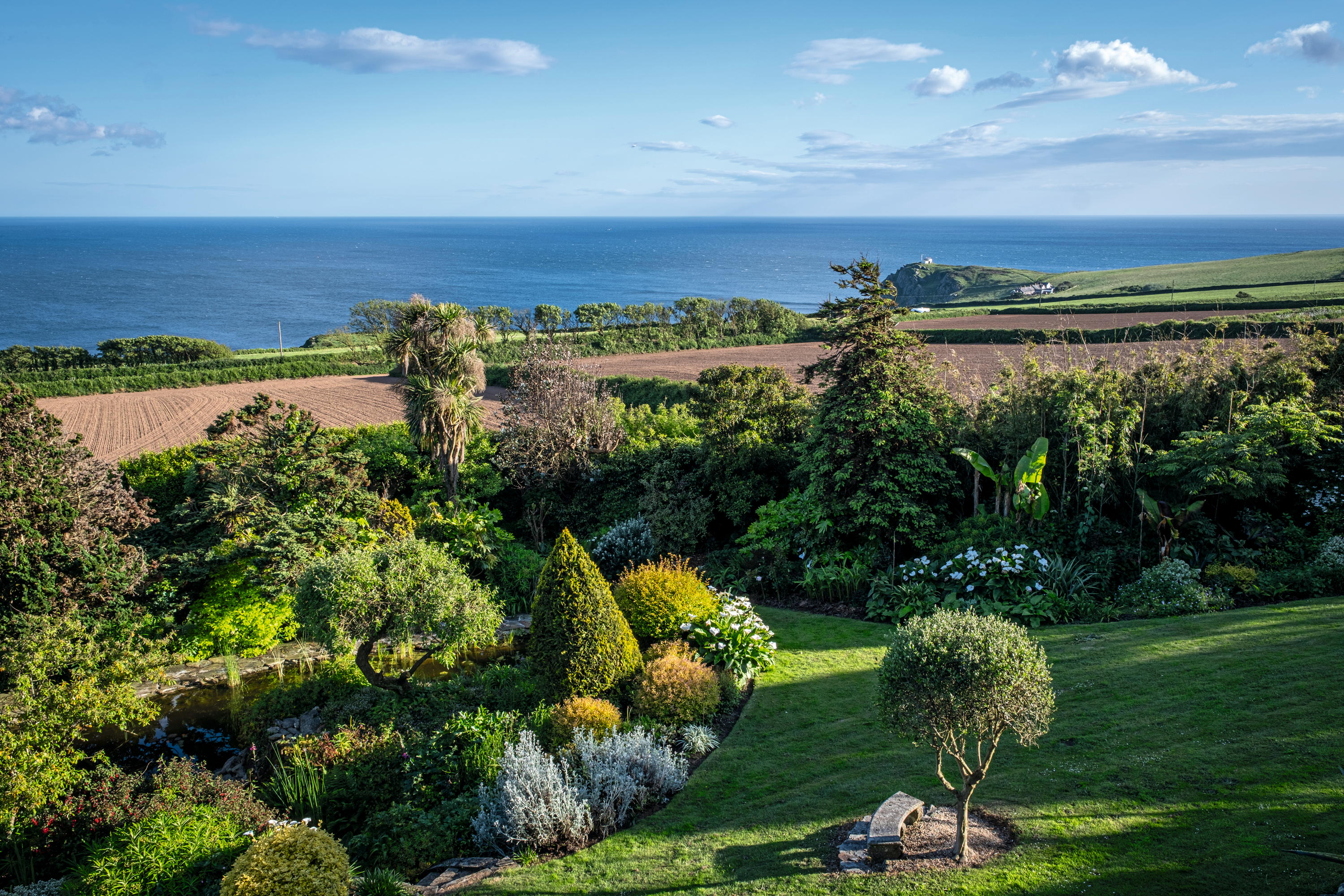
To the bottom of the lawn is the dell, protected by a mixed shelterbelt of trees.
Another revelation was the pond, which was leaking (resulting in a major repair project) and gunked up with gunnera. Sorted out now, it attracts myriad dragonflies and is a favourite haunt for a couple of ducks. ‘I didn’t even know it was there,’ says Mr Vanderspar. ‘There was also a smaller pond, which we discovered a year or two later. We are still coming across plants and features that we knew nothing about.’
When the Vanderspars first saw the house in 2014, they were slightly disappointed by the fact that some of the best views were blocked by the more mature trees in the shelterbelt. Be careful what you wish for: a big storm in 2014 felled several of them, mainly pines and leylandii, which opened up the views, but did away with the protection. They have since planted more Monterey pine, oaks and beech, as well as sturdy shrubs (see box). ‘There are very few trees in this area because of the wind, so we are making a point of keeping them,’ says Mrs Vanderspar.
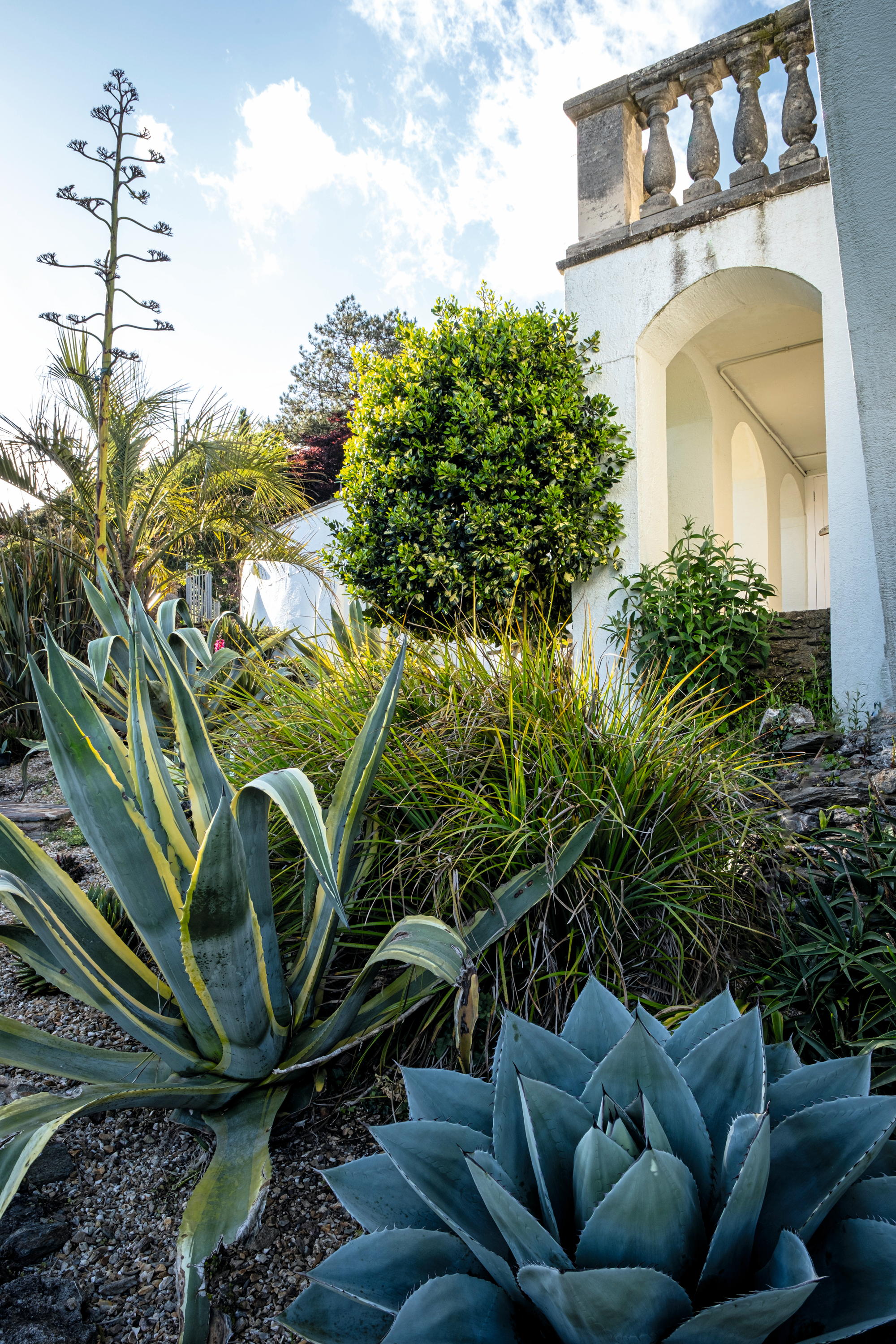
Variegated yucca, agave, palms and grasses thrive in the dry conditions and complement the Modernist architecture of the house.
The garden at Ash Park has not been one of rediscovery alone. Mr Vanderspar has been able to make his mark, too, not only in small tweaks such as cutting a path through a grove of deep-red camellias, to make a winding woodland walk where the ground is covered with red petals in spring, but in shaping trees such as mulberry and pine to embrace the architectural feel to the garden, especially near the house and the outcrop. ‘The rock is so much part of the garden, so I’m trying to incorporate the sort of plants that look good with it.’
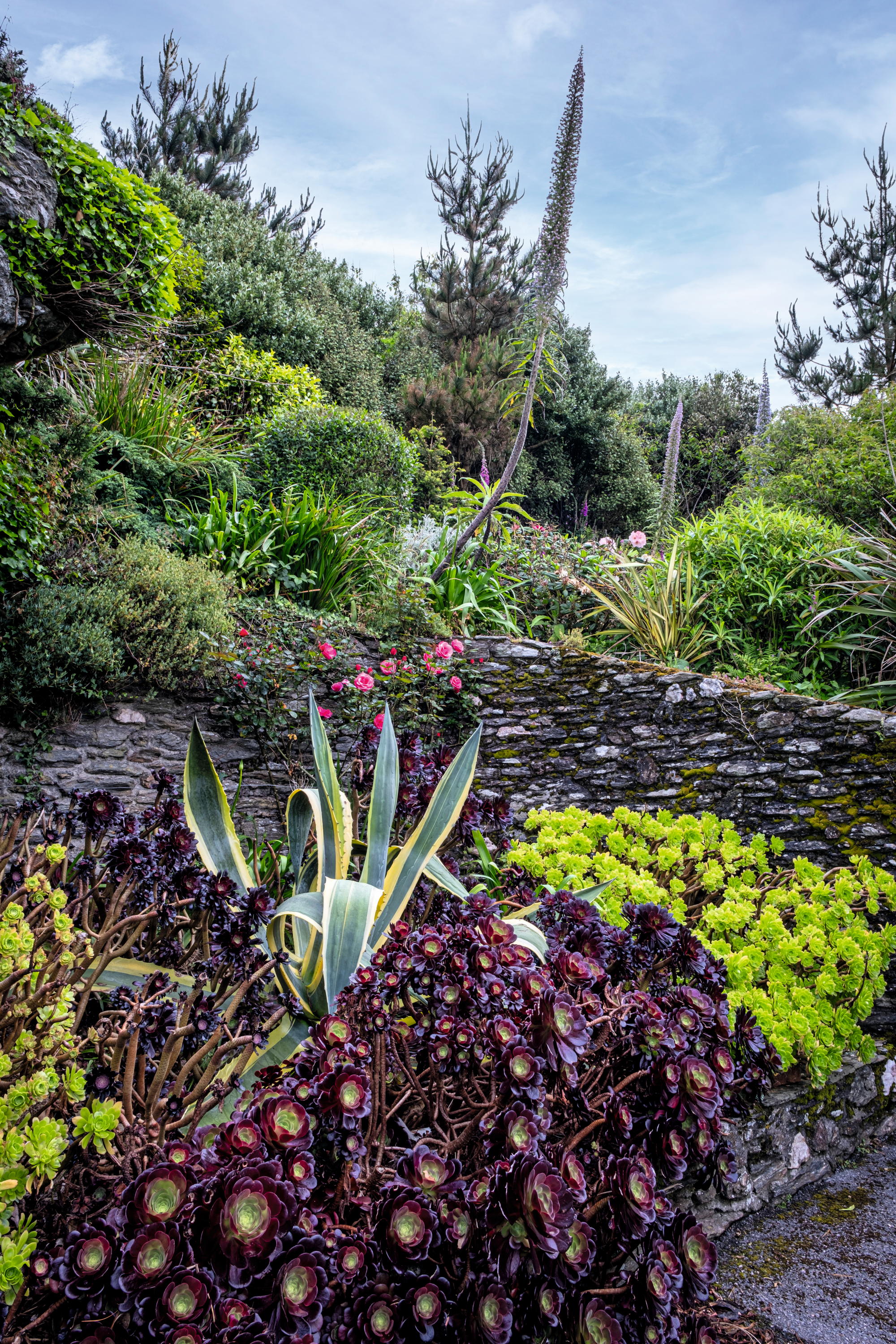
Aeoniums and yuccas thrive in the upper garden’s thin, stony soil.
Again referring to the rock, Mr Vanderspar has added to the existing collection of cacti, huge spiky agaves, towering echiums (which self-seed all over the place), aeoniums and other succulents in gravel beds, whereas at the bottom of the slope in the shelter of the windbreak, things are more lush and subtropical, with the likes of dahlias, gingers, cannas, hedychiums and bananas, which can be left out all year.
The couple have a nice laissez-faire attitude to the self-seeders, the wanderers, the clumps that need dividing: there’s plenty of room and, if they are happy, so are Mr and Mrs Vanderspar, as they are keen to follow and preserve Nature in their precious patch of colour and form within the wider agrarian landscape. ‘The sea, the fields, the changing seasons and the view are all part of what the garden is about,’ says Mrs Vanderspar.
Ash Park, East Prawle, Devon, opens for the National Garden Scheme. For details, visit www.ngs.org.uk